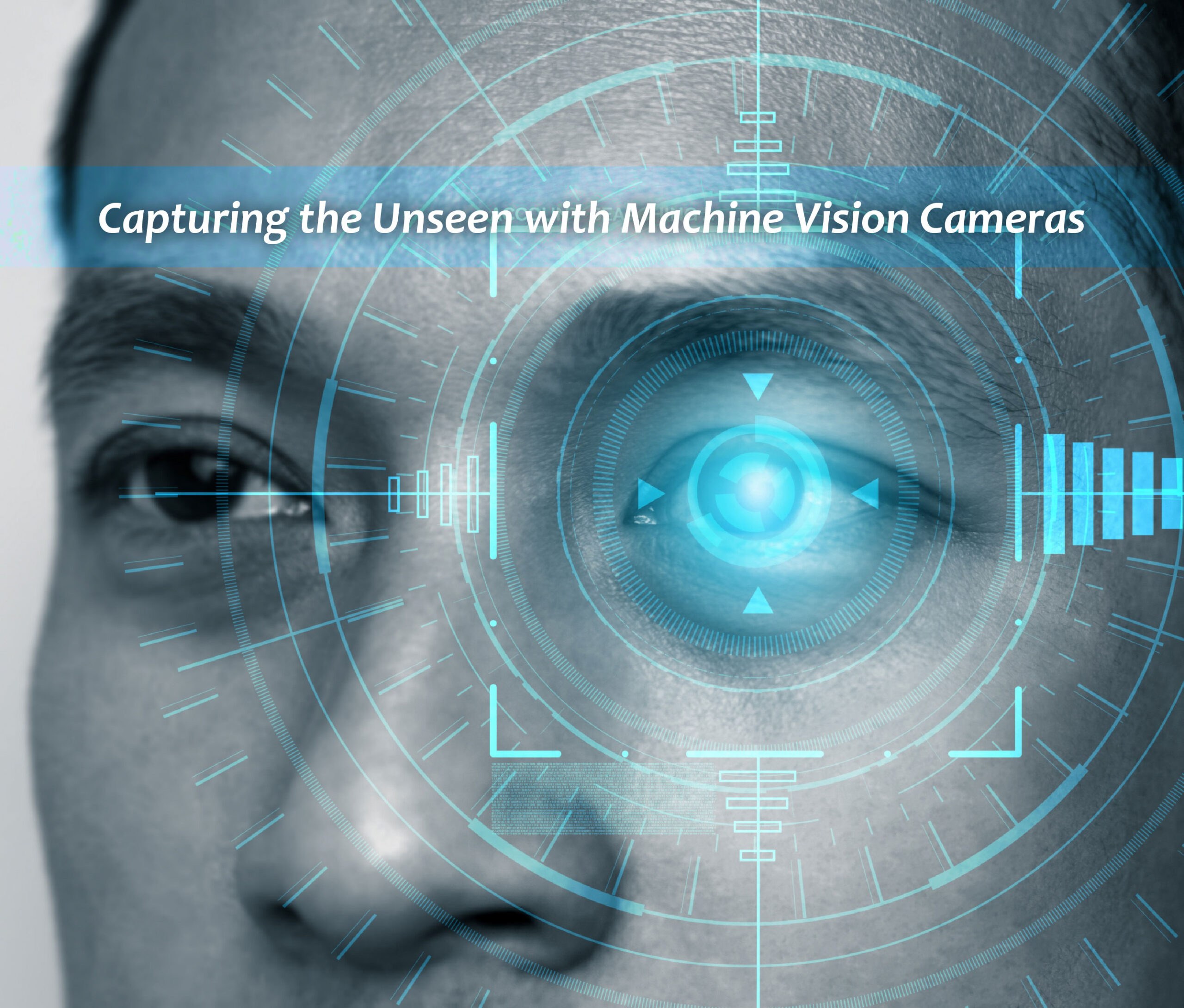Ever wondered how machines see the world? Here’s where “Machine Vision” takes center stage. It’s like giving eyes to computers, allowing them to interpret and understand visual information, just like we do.
Whether you’re into self-driving cars, quality control in manufacturing, or even just the cool stuff your smartphone camera can do, this technology is the secret sauce behind the scenes. In this blog, we’re going to learn about this mind-blowing tech and how it’s shaping the world around us.
What is Machine Vision?
Machine vision refers to the capability of a computer to visually perceive its surroundings. This involves the use of one or multiple video cameras, converting analog signals to digital, and processing the digital data. The processed data is then sent to a computer or a robot controller.
Machine vision and computer vision are often mistakenly used interchangeably. This technology is frequently combined with artificial intelligence (AI), machine learning (ML), and deep learning to enhance the speed of image processing.
Components of a Machine Vision System
 Machine vision systems, also known as vision inspection systems or automated vision systems, have a number of components that are present in the majority of systems. Despite the fact that each of these components serves a purpose of its own when combined, they play a specific role in this technology.
Machine vision systems, also known as vision inspection systems or automated vision systems, have a number of components that are present in the majority of systems. Despite the fact that each of these components serves a purpose of its own when combined, they play a specific role in this technology.
The following five components are frequently used in these systems components:
- Lightning System
- Sensors
- Vision Processing System
- Lens or Optical System
- Communications System
These systems may consist of separate components or be assembled as a single unit, like a smart camera that integrates the capabilities of various independent components into a single unit. No matter if a separate or integrated system is used, the nature of the parts being analyzed will affect how effective the system is. The performance of the system improves as a function of how effectively a component is positioned or oriented.
How Does Machine Vision System Work?
In manufacturing operations, this system plays a crucial role in evaluating products. This serves as a prime example of how an automated vision system functions in practical terms. Below is a brief encapsulation of how the machine vision system works:
- Detection: The process begins with a sensor detecting the presence of a physical object.
- Activation: The sensor subsequently activates a light source to illuminate the area and a camera to record the image or a specific aspect of the object.
- Transformation: Following this, a frame-grabber, a digital conversion device, transforms the camera-captured image into a digital format.
- Storage: The digital output is then stored on a computer for analysis by the system software.
- Analysis: The software application compares the file against a set of pre-established criteria to identify any irregularities. If any such irregularity is identified, the product will be deemed as failing the inspection.
Capturing the Unseen with Machine Vision Cameras
 Machine vision cameras utilize specialized sensors and optics to capture images, analyze them, evaluate various attributes, and make precise decisions through the use of hardware and computer software. When equipped with appropriate optics and resolution, these cameras have the ability to identify minute details of objects that may be imperceptible to the naked eye.
Machine vision cameras utilize specialized sensors and optics to capture images, analyze them, evaluate various attributes, and make precise decisions through the use of hardware and computer software. When equipped with appropriate optics and resolution, these cameras have the ability to identify minute details of objects that may be imperceptible to the naked eye.
The essential elements of a camera system include lighting, sensors, communication systems, lenses, and vision processing systems. The camera sensor plays a crucial role in converting incoming light into a digital image, which is then analyzed by the processor. When choosing a camera, it is important to consider various factors, one such is ensuring the selected camera is appropriate for the intended application
For example, a camera used for robot guidance will differ in its specifications from one used for production control. Your selection of specific features will hinge on both your budget and the intended application. Machine vision cameras find applications across a range of industries such as pharmaceuticals, industrial manufacturing, semiconductors, food and beverages, electronics, automotive, and packaging and printing.
Additionally, these systems find extensive use in pattern recognition, location analysis, and camera inspections. In location applications, the main objective of a machine vision system is to identify and determine the position and orientation of physical objects. When it comes to inspection applications, the system is used to verify specific attributes, such as ensuring the presence of accurate labels on bottles or the correct arrangement of chocolates in a box. In identification applications, the system is employed to read various codes and alphanumeric features.
Who’s in the Frame? Top Machine Vision Companies
Machine vision systems, which empower autonomous vehicles and other robots with sight capabilities, are predominantly utilized in tasks such as inspection and quality assurance. Below are some companies actively advancing machine vision technology for applications in manufacturing, logistics, and various other fields.
- 3D Infotech
- Cognex
- Industrial Vision
- STEMMER IMAGING
- VAIA Technologies
Bottom Line
Machine vision, with its ability to see and interpret the visual world, is reshaping industries and paving the way for some mind-blowing technological advancements. From manufacturing, healthcare, transportation, and security, the applications of this technology are boundless. Who knows what incredible developments lie ahead? One thing is for sure, this technology is the eye of the future, and we’re just getting started with the endless possibilities it has to offer.


